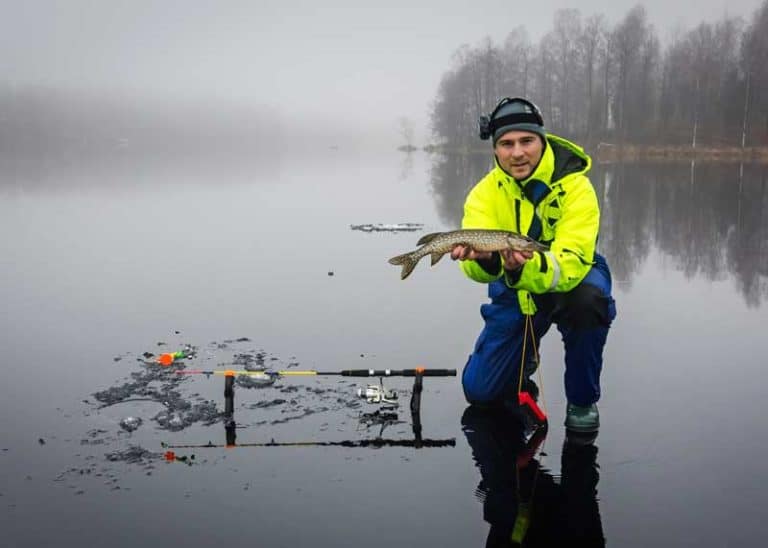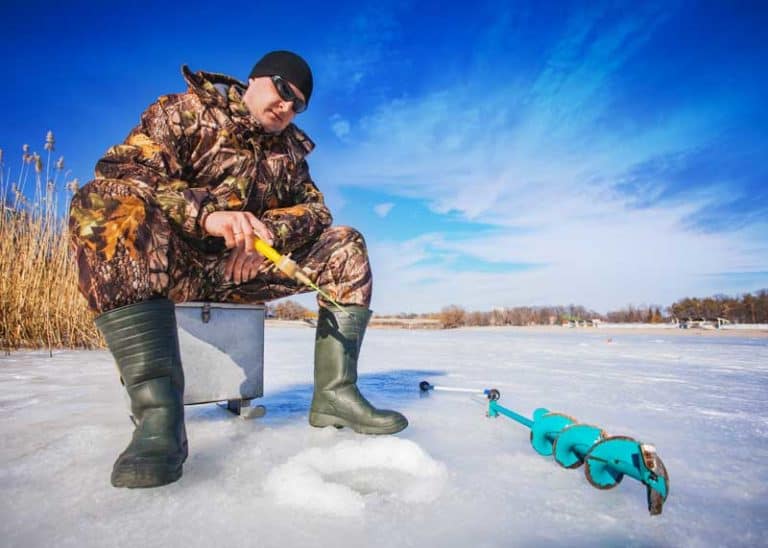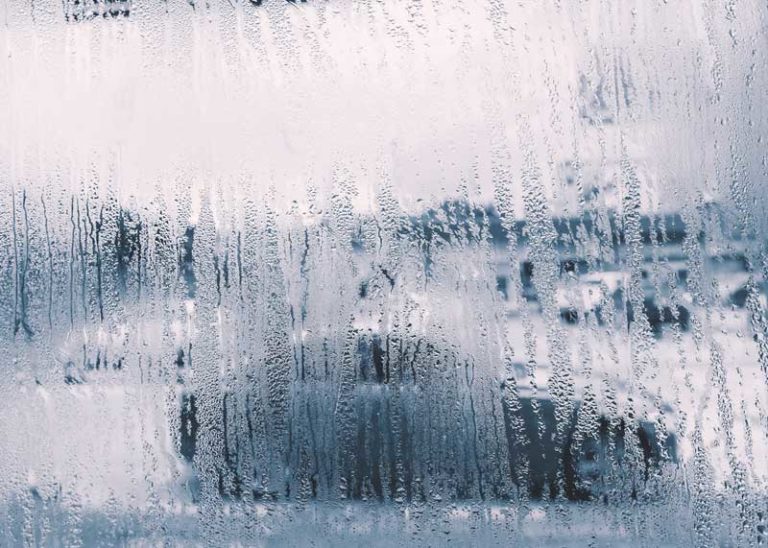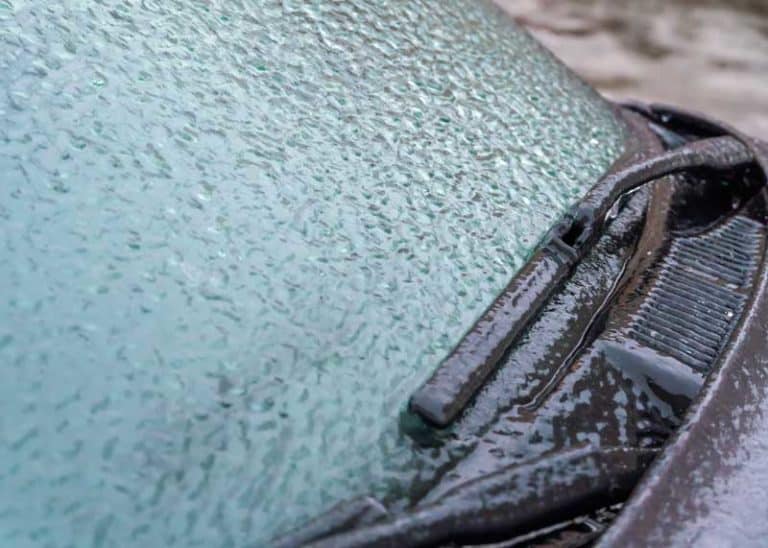How to Heat a Camper Without Electricity (6 Easy Ways)
If you don’t have an electricity hookup for your camper, there are still several different ways you can effectively heat the space. This can be useful if you’re out in the backcountry and don’t have access to a campground with utilities or a generator.
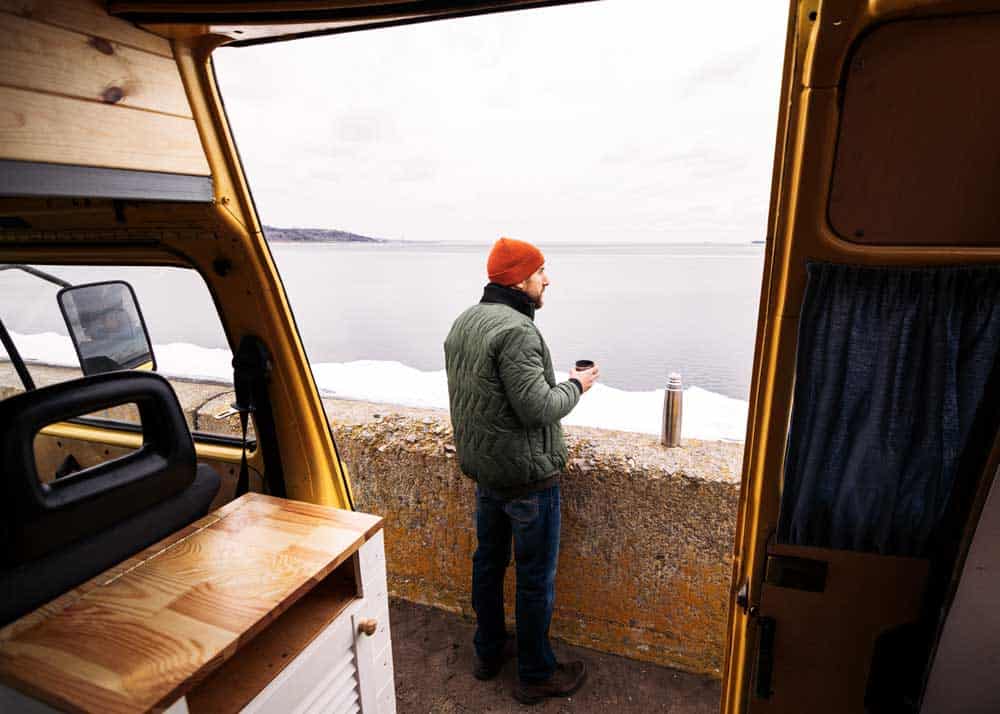
Below are some of the ways that you can heat your camper without electricity. Using these methods, you can keep your camper nice and toasty no matter where you are.
1. Use Your RV Propane Furnace
The easiest heating method might already be installed in your camper. Check your RV and see if you have a propane furnace.
If you do, you should be good to go. No need to use an electric heater if you have a propane furnace.
Do RV Propane Furnaces Use Electricity?
Yes, but not that much. The furnace needs electricity to ignite the flame and run the fans.
To power the furnace, you’ll use the 12V battery in your RV. How long will it last?
According to Full Moon Adventure Club, a single RV battery will last roughly 11 hours while running the propane furnace.
Here are the specs they tested.
- 12V battery (Deep cycle). 750 cranking amps, 109 amp hours. Similar to the specs of this Weize battery on Amazon.
- 32°F (0°C) outside temperature
- 65°F (18°C) RV thermostat
- The battery lasted an average of 11 hours over three nights.
To make sure you have enough power for the night, it would be best to have two of these deep-cycle 12V batteries. And then you’ll need to charge them during the day for the next evening.
Here’s how to heat your RV without propane.
2. Use a Portable Space Heater in your RV
One of the easiest ways to heat a camper without electricity is to use a portable propane heater. These small heaters can efficiently heat a space without needing to be plugged in because they run off propane gas.
The only caution that RV owners need to use when heating their camper with a space heater is that these heaters can put off carbon monoxide.
Carbon monoxide is an odorless and colorless gas that is poisonous and can quickly become fatal to humans and animals when it builds up in small, enclosed spaces.
However, as long as space heaters are used according to their safety guidelines, they can be used without threatening the lives of the people inside the camper.
The heater we use is the Mr. Heater MH9BX. It is a propane radiant heater and is rated as indoor-safe.
See the current price for Mr. Buddy heater on Amazon.
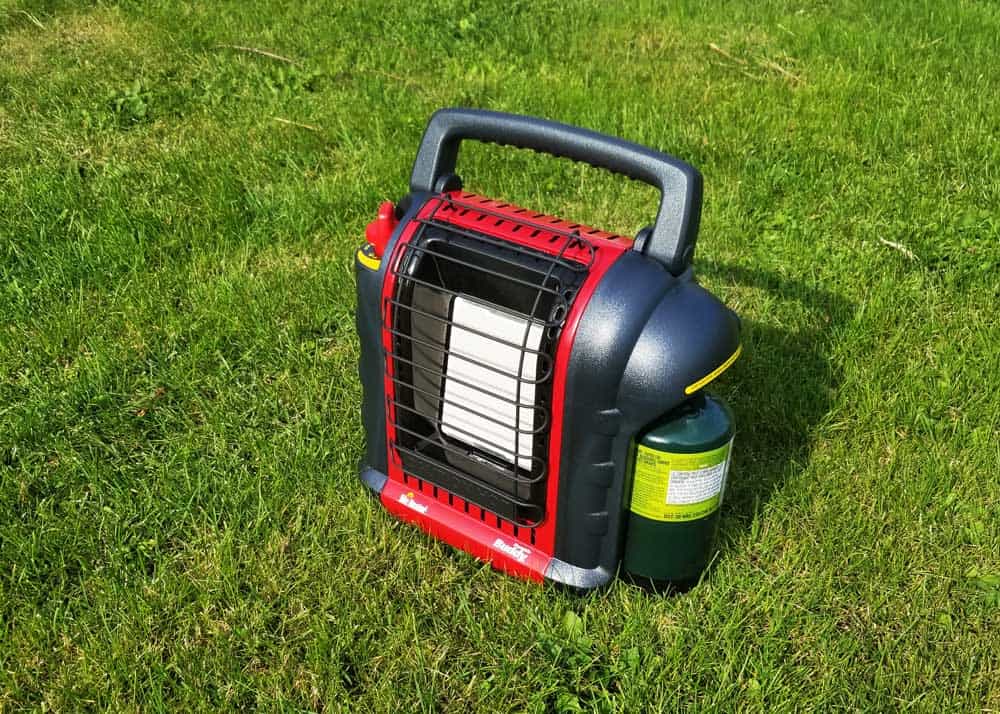
Here are some safety guidelines to remember when using a portable propane heater:
- Ensure that the space heater is far away from all flammable materials and objects so that the heater doesn’t accidentally catch anything on fire in the camper. Fabrics, papers, and other combustibles need to be kept several feet from the space heater at all times when the space heater is operating.
- Never leave a space heater running when people are sleeping in or away from the camper. This can cause a build-up of carbon monoxide or start a fire when no one is around to stop it.
- Check to see if the fire-suppressing equipment you have in your camper, such as a fire extinguisher and a fire blanket, are in working order and easily attainable if a fire is ignited.
- Make sure that your camper has plenty of ventilation so that carbon monoxide doesn’t have a chance to build up inside. It’s also a good idea to make sure that your camper is well insulated so that you only have to run your space heater for short periods before the heat has adequately warmed the inside the camper.
As long as you take the proper precautions, using a portable space heater is one of the easiest ways to heat a camper. (Source: Slyvane)
3. Use Your Vehicle’s Heater
This works best if your are camping in a motorhome – where the vehicle cabin connects to your living area.
But even if it doesn’t, you can still jump in your truck and get warm. Just start the engine and turn up the heat.
This isn’t the best solution for a long term trip. But if you’re cold and done have another heat source, this one will keep you warm while keeping you out of the elements.
Of course, you could start a campfire but you would still be outside. And if it is winter or raining, this isn’t ideal.
Unless it isn’t very cold outside or your RV is superbly insulated, it is unlikely that your space will stay warm until morning. But at least you’ll get warmed up – even if you have to start the engine a few times during the night.
4. Keep Your Camper Warmer by Using Insulation
Another excellent way to keep your camper warm without electricity is to contain the body heat of whoever is using the camper with proper insulation.
Body heat and the heat from small heaters can be conserved and kept inside the camper by using insulation methods:
- Ensure that the caulking on the camper is regularly stripped out and replaced whenever it begins to dry rot or crack to prevent drafts from entering the camper.
- Replace any weather stripping on your camper when it starts to become degraded. Any area of the camper that contains cracks, gaps, or drilled holes for wiring and other pass-throughs can act as a break in the insulating barrier of a camper’s interior, allowing heat to escape gradually.
- Cover up the windows of your camper with reflective insulated panels. These foil panels can help keep any heat generated inside the camper, and the reflective qualities of the insulation can also help to amplify it, making the camper feel even warmer.
- Cover the floor of your camper with thick, plush rugs. These rugs will not only make the floor feel warmer and cozier, but they will also act as an extra layer of insulation.
- Place rolled towels or blankets at the bottom of doorways to help prevent drafts from getting in and sucking heat out of the camper.
The better insulated your camper is, the less time you have to spend trying to heat it with an external heat source. (Source: Koa)
5. Use Warm Bedding for Spot Warming Your Camper
When you’re trying to heat a camper without electricity, the biggest concern that you’re likely to have is keeping your camper warm at night while you’re asleep.
It’s not generally considered safe to run a space heater unsupervised or for several hours at a time, so you’ll need to find other methods to stay warm through the night without electricity.
Here are some ways you can help keep the bed in your camper heated without using an electrical heating source (Source: J.D. Power). Links go to Amazon.
- Flannel sheets: Flannel sheets are thicker and hold much more heat than regular cotton or silk sheets and can help hold heat in the bed during cold camping nights.
- Thermal sleeping bags: Thermal sleeping bags are a heat-efficient way to stay warm in bed in an unheated camper since they are designed to catch and hold body heat more effectively than other types of bedding.
- Hot water bottles: Hot water bottles can help build up heat inside bedding, especially at the end of the bed, where your cold feet will be. With insulated bedding, the heat given off by the hot water bottle can be effectively trapped inside for a nice, toasty sleeping spot.
- Down comforters: Down comforters are great for conserving heat, and layering a down comforter on top of a thermal sheet set can turn your bed into a perfect pocket of warmth no matter how cold the rest of your camper gets during the night.
- Disposable heating pads: Disposable heating pads are a good way to heat your bedding ten to fifteen minutes before you hit the sheets. Unlike hot water bottles, disposable heating pads will generate heat for up to two and a half hours after being activated.
Choosing warm bedding and getting it heated up can go a long way toward making sure you stay warm even when you can’t leave your space heater running.
These tips can be especially helpful when stealth camping.
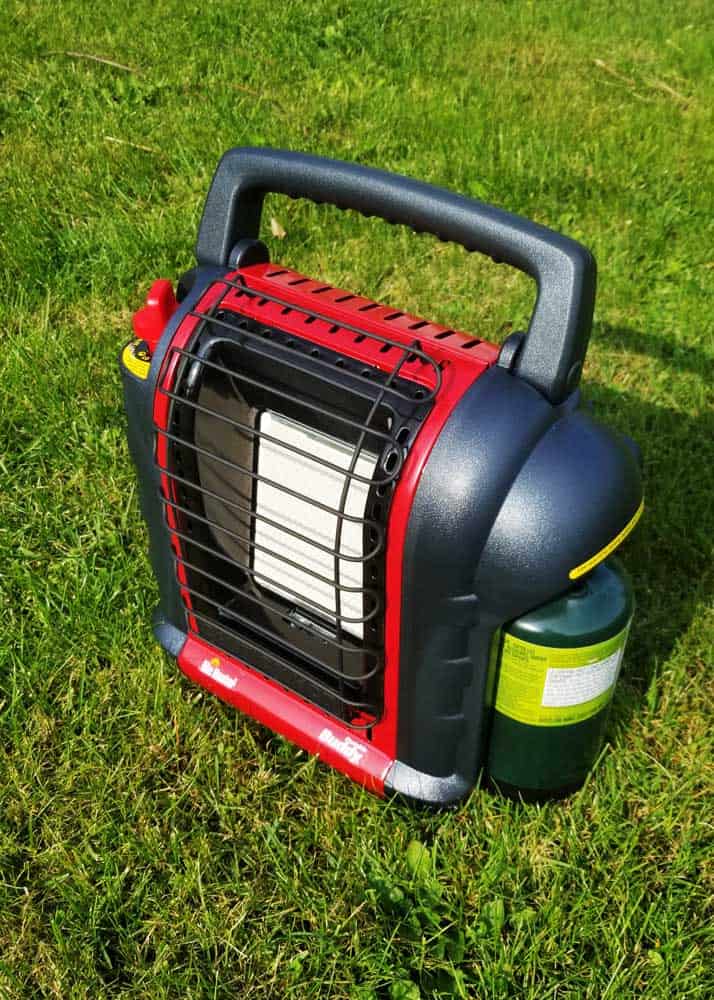
6. Install a Wood Stove in Your Camper for Heating
Other than propane heaters, another good option for heating a camper is to install a wood stove.
I know. This sounds crazy at first. But it might actually be viable. Especially if you are planning on winterizing to live in your camper all winter.
Wood stoves are effective heaters and are surprisingly cheap. But they can also pose a fire hazard if they aren’t placed on or near fire-resistant surfaces capable of handling the ambient heat put off by a wood stove.
For a wood stove that you can actually use inside your RV, you should consider Cubic Mini Wood Stoves. They are roughly 12″ square and are made to heat cabins, boats, and RVs. One will heat roughly 200 square feet.
Installing a wood stove in your camper will likely raise some concerns. Like insurance, liability, and safety. Make sure you to do your due diligence before ordering/installing your RV wood stove.
Remember that heat from a stove can combust objects without directly touching them. Make sure to comply with all distancing requirements. And set up any required heat shields.
There are lots of advantages to getting a wood stove for your camper, such as the cozy aesthetic vibe and wonderful smell that it gives off.
However, you need to make sure that your camper is well-ventilated to prevent a loss of oxygen and a build-up of carbon monoxide, which can be a danger with any fuel-burning heat source.
I love the idea of a wood stove in my RV. But I can’t imagine actually doing it. It just seems too risky. I don’t think I could sleep when it was burning.
Learn more about propane: Can Propane Freeze? 6 Things to Know

Keep reading: 14 Winter RV Camping Tips
Many Ways to Heat an RV Without Electricity
While it is convenient to heat a camper with electricity, having an electric hookup at your campsite isn’t always possible.
If you want to go boondocking in comfort during the winter months, you’ll want to look into some alternative methods of heating your camper.
Portable propane heaters, adequate camper insulation, warm bedding, and wood-burning stoves are terrific options for warming your camper up without electricity. For even more warmth, try using more than one method!
Which method are you going to try? I would love to hear how it goes for you.

